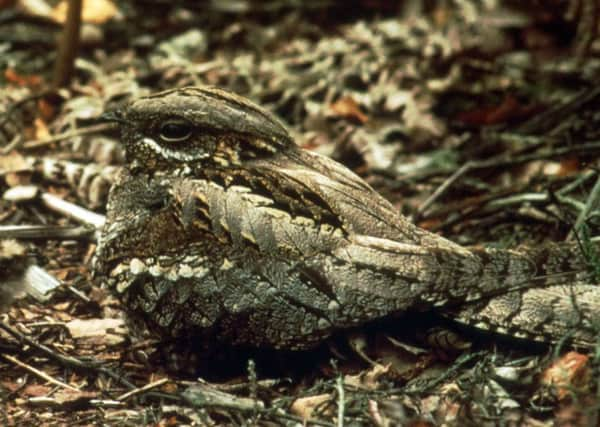Birdwatch: Churring song of the nightjar is familiar once more


As dusk falls a male will start to sing, a sound like a badly tuned two-stroke engine and delivered at the rate of 1,900 notes each minute. He will swoop and fly around his territory, the white patches on his wings and tail showing through the twilight.
During daylight nightjars are rarely seen. They stay motionless, often laying on a tree branch, camouflaged by feathers that look like tree bark or dead leaves.
Advertisement
Hide AdAdvertisement
Hide AdTraditional habitat for nightjars is lowland heath but these days more than half of the UK population nest in forests which offer a mix of mature and newly planted trees.
They like clearings of newly planted trees along with some tall trees both for the males to churr from and for both sexes to hunt the large moths and other insects on which they feed, scooping these up in their huge gaping mouths.
Yorkshire is fortunate to have a number of good places to look for nightjars with Thorne and Hatfield Moors in South Yorkshire holding around 85 pairs while the huge North York Moors forests supporting a large and growing population of more than 200 pairs thanks to careful management by the Forestry Commission.
It is a far cry from not so long ago when the nightjar was Red Listed as a bird needing urgent help because the loss of heathland to development and large scale felling of mature forests meant many of its breeding sites had gone. Now, thanks to the creation and management of suitable habitat, the nightjar, along with the bittern, has been moved to the less critical Amber List. As a result nightjar numbers have quadrupled over the past 40 years and are moving into new areas or starting to recolonise former sites such as Skipwith Common near York.
Advertisement
Hide AdAdvertisement
Hide AdNightjars start arriving back here from Africa in mid-May, just when the larger insects are starting to emerge and lay two eggs in a scrape on the ground.
Until recently very little was known about where they spend the winter in Africa but a number of nightjars have been fitted with geolocators by the British Trust for Ornithology which revealed that they winter in a similar area to cuckoos in the Democratic Republic of Congo.
Spoonbills have been reported across the region including up to seven at the Fairburn Ings reserve, one of which was ringed at a nest in Holland in 2013. Up to four have been seen on the Saltholme reserve on Teesside and one at Kilnsea.
More red-footed falcons were seen with four flying by in four hours at Spurn on Sunday. Others have been reported at Hornsea Mere, Long Nab, Scarborough and from the raptor viewpoint at Wykeham forest.
An Alpine swift flew south at Spurn on Sunday giving excellent views and followed a pallid swift seen there on Friday while a red-rumped swallow was also seen on Sunday.